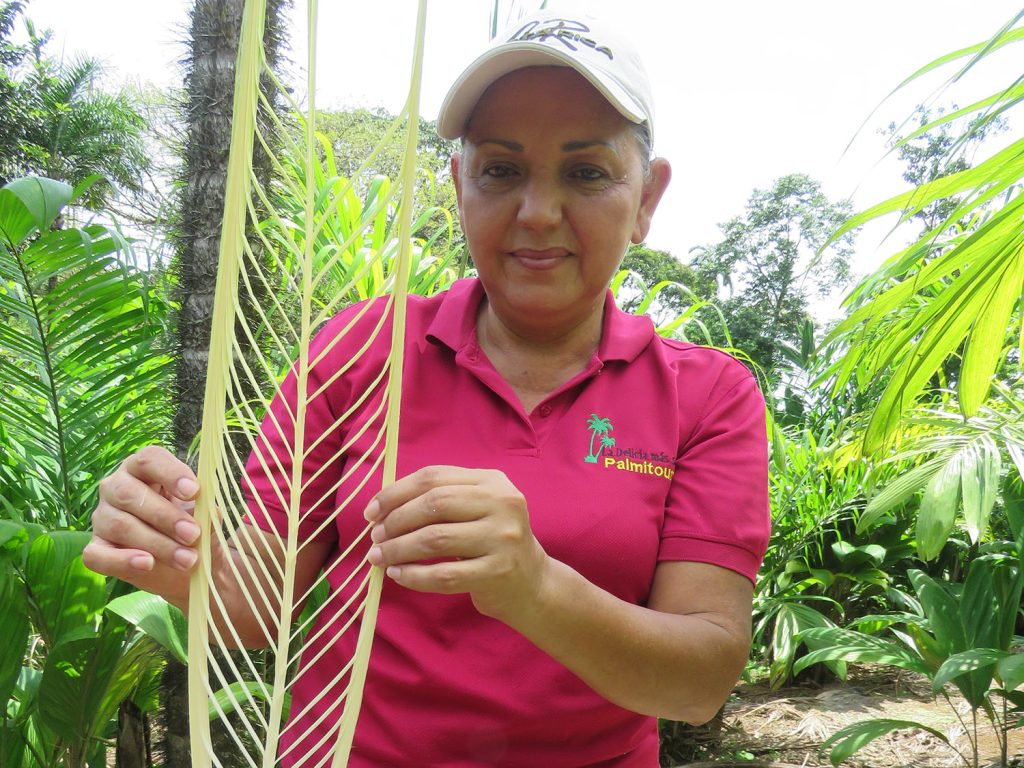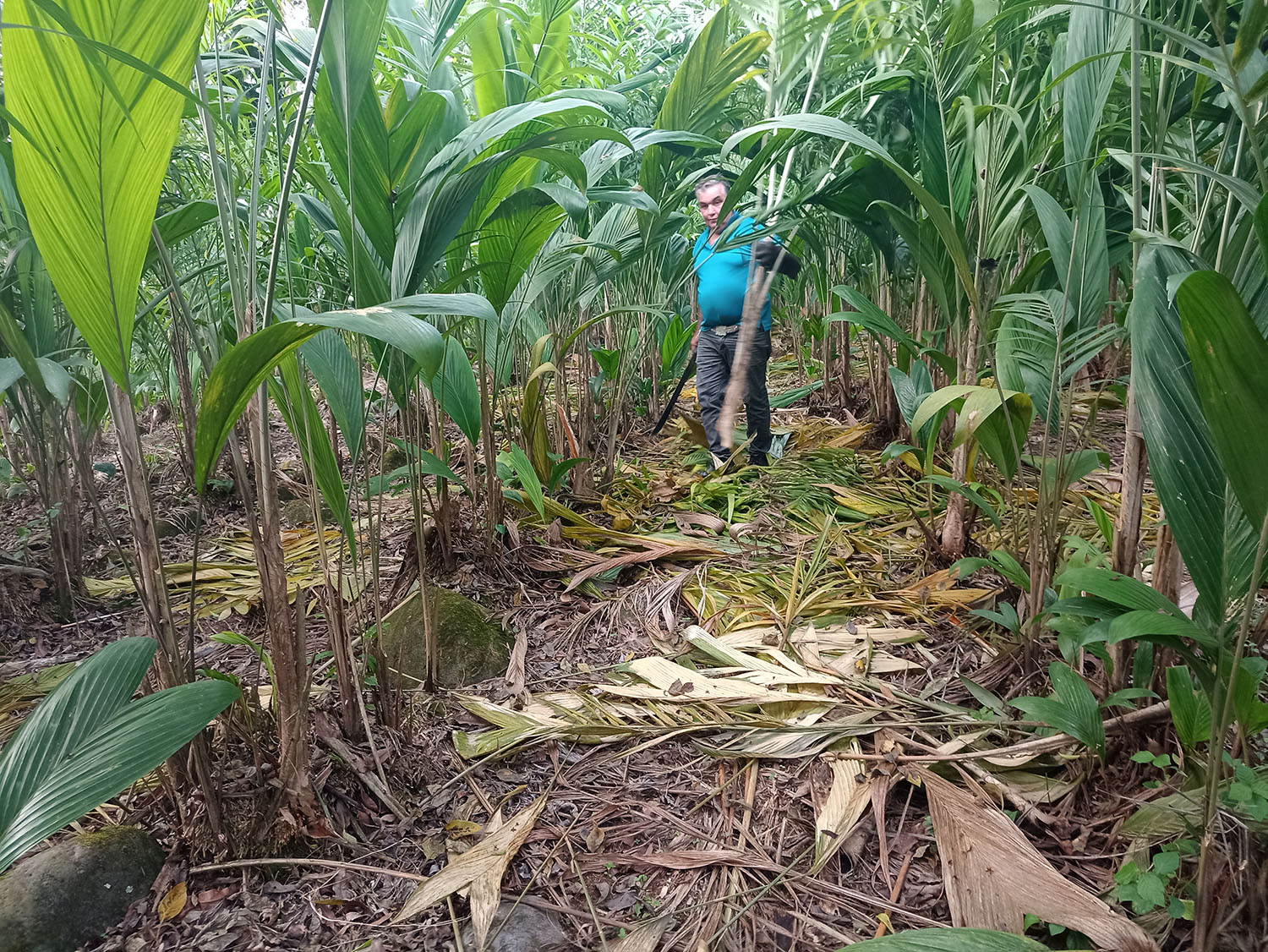María Luz Jiménez earned the title of “La Reina del Palmito,” or Queen of Heart of Palm, in Horquetas de Sarapiquí, because she prepares 10 different dishes with this ingredient. Her skills have been tested by Costa Ricans and foreigners alike, all witnesses to this 58-year-old entrepreneur’s defense of her noble title.
How about a heart of palm flan? Or chorreadas? Or why not a ceviche? In addition to trying all these dishes, María Luz’s business offers a tour of a 3.5-hectare heart of palm plantation.
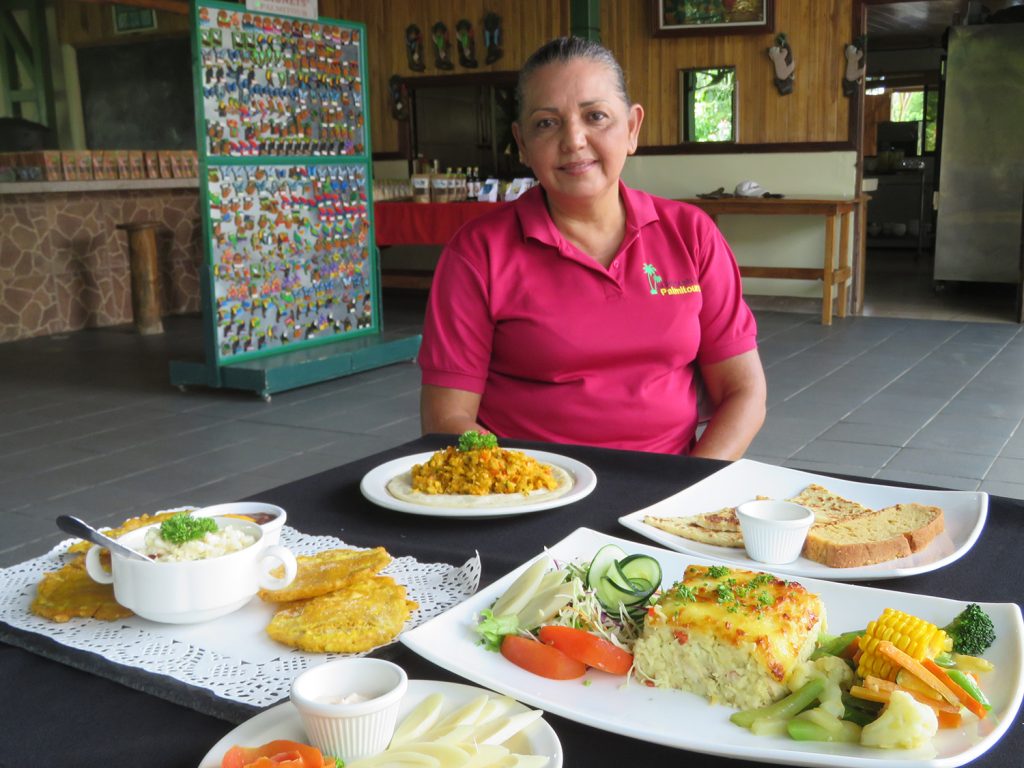
It all started as a stand selling fruit and coconut water, but it grew over the course of 25 years and became the Palmitour Restaurant, where visitors sample the dishes of this matriarch, who has three daughters and a granddaughter.
María Luz’s success also tells a broader story about her community and local economy.
Sarapiquí is the tenth canton of the province of Heredia; its territory represents 82.5% of the province. It contains exuberant flora and fauna and fertile land, which is used for tourism and agriculture, the main drivers of the canton’s economy.
Bananas and pineapples, both export products, stand out among its agricultural products, along with tubers such as cassava, ñampi or tiquisque—and corn, of course. These were staples for our ancestors.
In the case of heart of palm—the edible inner part of the stem of the peach palm—its large-scale production is more recent. It dates back to the 1980s, when a large number of hectares were planted to produce for export, mainly to the United States. The locals also began to consume heart of palm, and over the years, it became a go-to product on the table of Sarapiqueños.
However, the history of this product is one of ups and downs, innovation and ingenuity.
The history of heart of palm in Sarapiquí
Heart of palm, or palmito, is the most tender part of the stem of some palm trees, including the pejibaye. According to Arturo Olaso of the Ministry of Agriculture and Livestock (MAG), it is considered an exotic food, with a pleasant flavor and color. It is considered a gourmet product in French cuisine.
Palmito is exported from Costa Rica primarily to the United States, Canada, Belgium, Spain and France.
Juan Rodríguez Castro, a producer and cooperative member, is President of the Board of the Horquetas RL Cooperative. He’s been growing heart of palm in the canton of Sarapiquí for more than 35 years. According to Juan, the planting of heart of palm began between 1980 and 1982, on the Indaco farm belonging to the Jugos del Campo company.
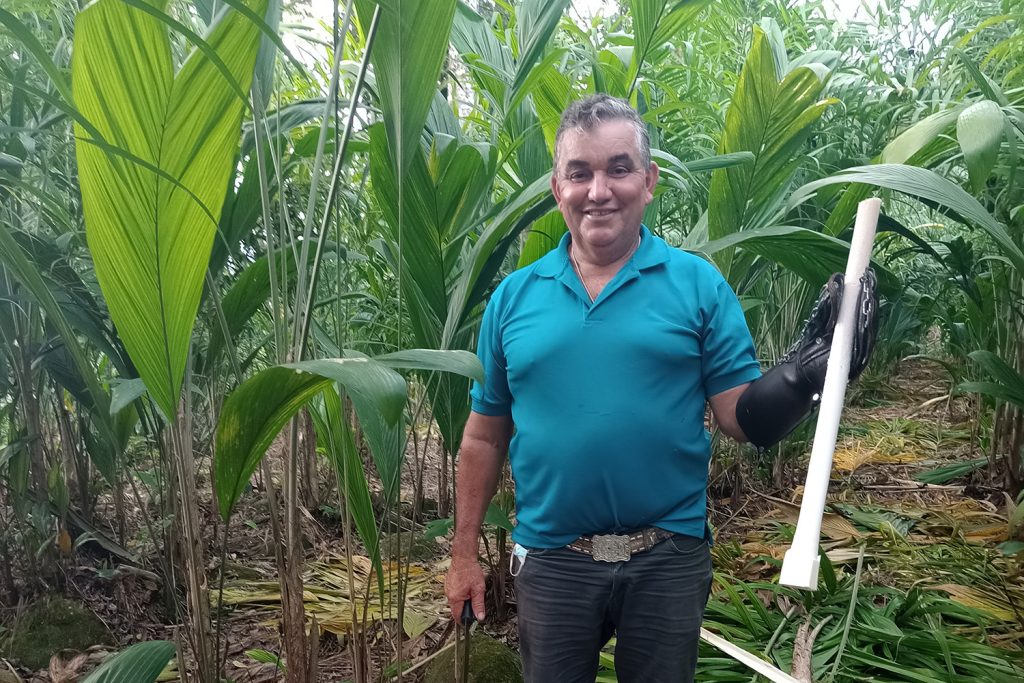
During the 90’s there was a boom. Peasants cleared their plantations and dairies to make room for the palmito, because at that time they paid very well. In Horquetas de Sarapiquí, up to 6,000 hectares were planted, but it was also planted in Siquirres, Upala, Pérez Zeledón and Pococí.
However, as has happened in other parts of Costa Rica and the world, that boom left many in trouble when the market changed. Juan says that in the year 2000, Ecuador began planting palmito, with much lower costs than in Costa Rica. This caused the heart of palm crisis in the country. Thousands of hectares were lost. Prices fell to the point of selling heart of palm to the highest bidder.
The De Masa company’s decision to move to Pococí, selling the thousand hectares that it owned in Horquetas de Sarapiquí, meant that hundreds of people would be left without their jobs and the producers would not have anyone to sell to.
Only ingenuity and persistence kept the story from ending there.
“For this year [2022], we have high hopes for sales, because now the heart of palm is sold beyond just the raw product. There is an added value, with companies that are exporting canned palm heart rice, palm heart lasagna, palm heart purée, and other presentations,” says Juan.
In a world where the gluten-free market is growing, these products are gaining ground, allowing the Sarapiquí companies that produce them to pay more to heart of palm producers.
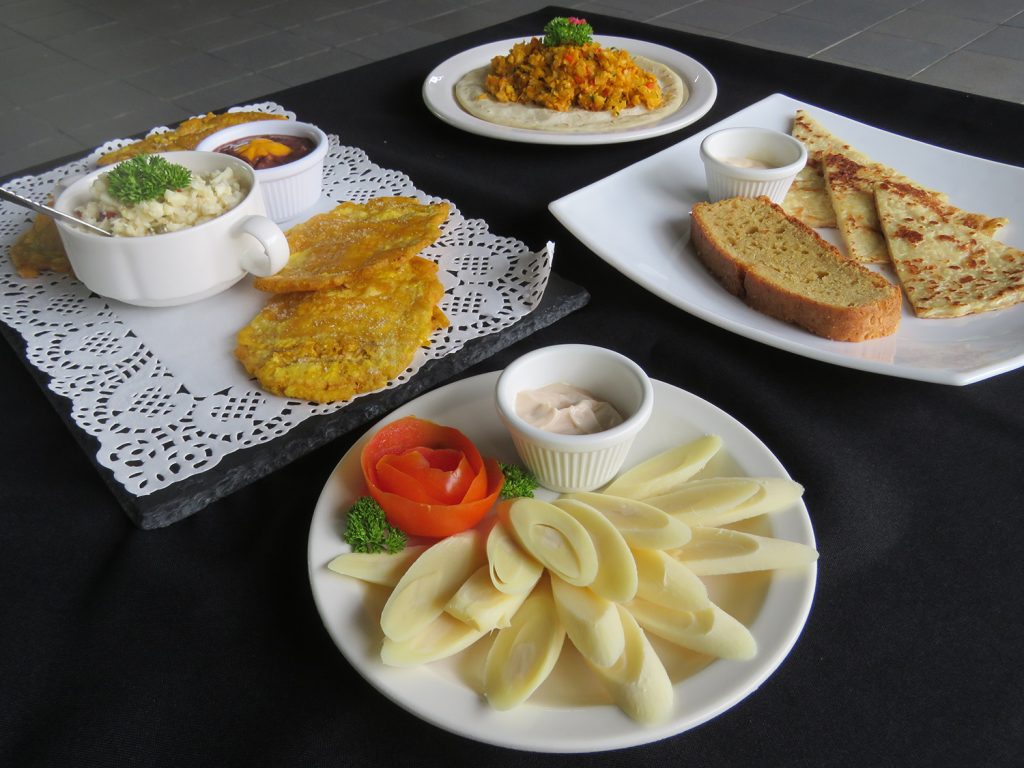
However, the history of the growth of these companies and products in the area is not easy either, different commercial alliances have emerged and ended, creating a certain instability for producers and the CoopeHorquetas cooperative
Still, according to Juan, the added value of heart of palm has meant that although production has fallen, producers can now stay afloat thanks to higher prices.
No longer a ranchito
Part of the rise in heart of palm in the area has been achieved at the level of micro-entrepreneurs such as María Luz. The rural microentrepreneur remembers that the same drivers who passed by her stand with tourists suggested that she sell them food. That’s how she started taking advantage of the raw material that she had nearby and set up a menu based on heart of palm.
“What pushed me the most is that my daughters were leaving high school and I needed more income to send them to university. That’s how it all started,” explains María Luz, who acknowledges that it is difficult because sometimes months go by and no tour groups arrive.
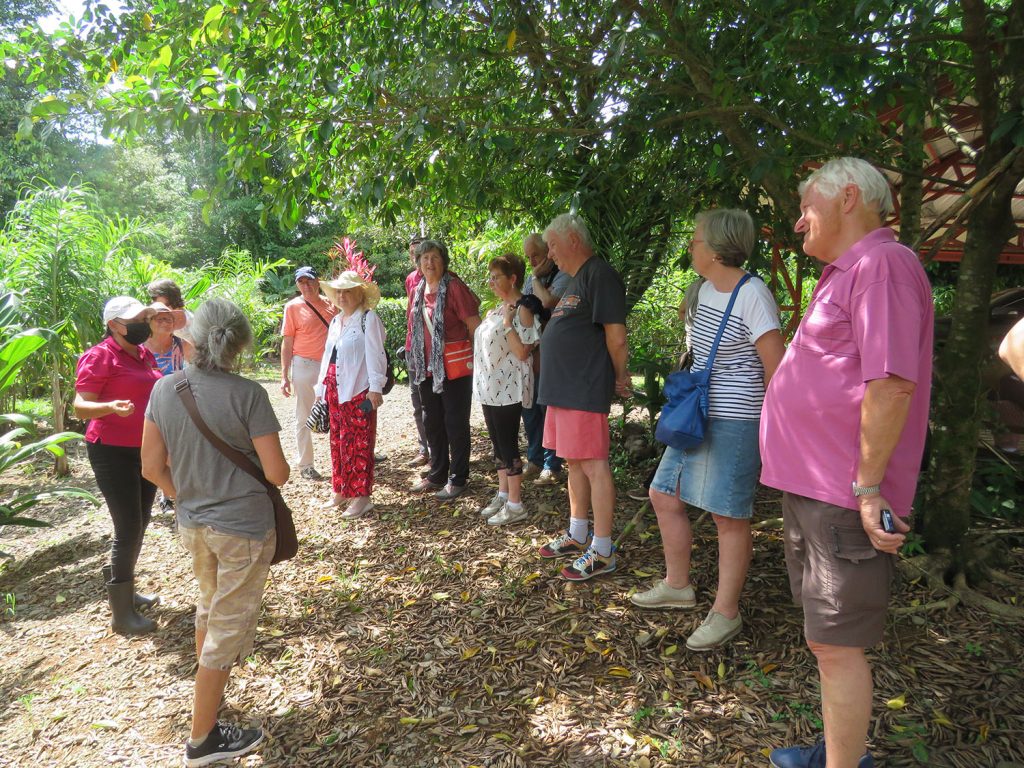
Palmitour also welcomes Costa Ricans (for more information call 8880-4737). She offers a variety of heart of palm dishes for small or large groups. Lasagna is the most requested dish at Palmitour, but she also offers picadillos, “quequitos,” cocktails, pickled palmito, escabeche, and ceviche.
A 10-person package includes a heart of palm ceviche appetizer, a drink made from natural fruits from the area, some patacones with mashed beans and palmito lasagna with vegetables. For dessert: fruit and a delicious coffee with palmito chorreadas ($35 per person, including a tour of the farm).
“We give the visitors a half-hour tour of the plantations, in which the whole process of [heart of palm] cultivation is explained to them,” says the micro-entrepreneur, who is especially busy between December and April.
One of her goals is to build cabins for travelers to stay in. They’ve already expanded the space where customers dine, served by María Luz with the help of one of her daughters, who studied tourism, and a neighbor who helps out on high-traffic days.
The place has space for more than 100 people, with awnings for additional outside seating.
If you’re passing through Horquetas early, take heart: Palmitour opens at 7 a.m. to serve you a coffee and a palmito chorreada.
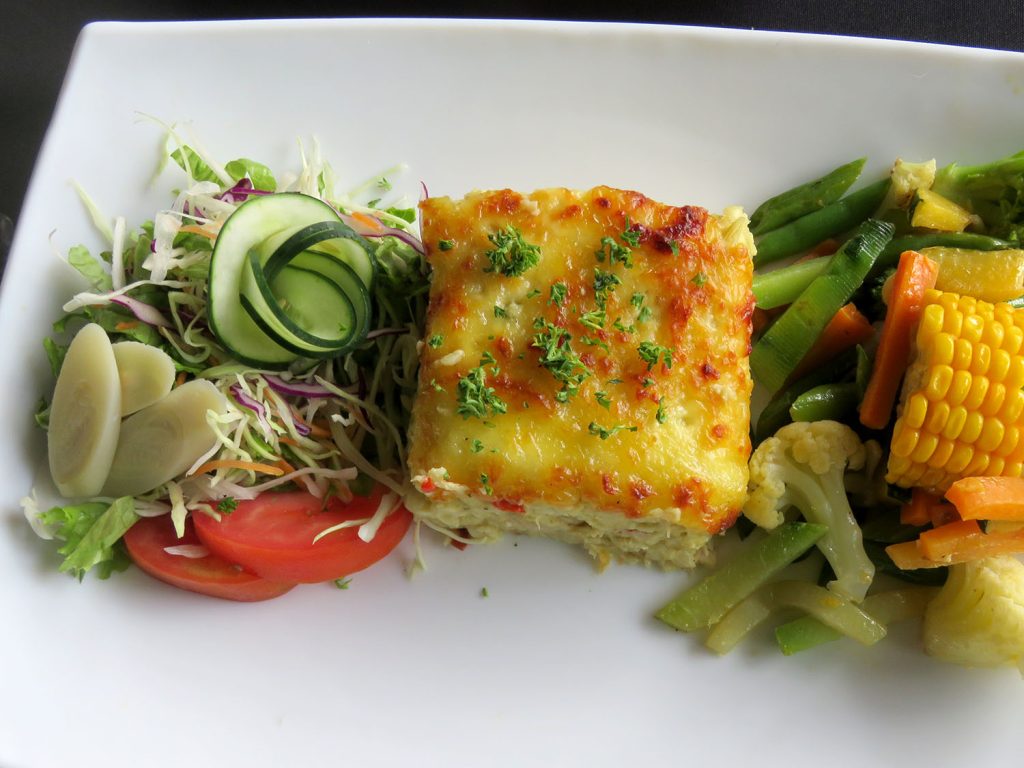
Looking ahead
María Luz, a Guanacastecan who put down roots in Sarapiquí 42 years ago, knew how to move her business forward despite the pandemic. She says there were bad days, but she is getting back on her feet and has hope for the future.
With profits from food sales, María Luz raised her daughters, 39, 37 and 33 years old. Today, she says she is more proud of her efforts, because one of them graduated from medical school in Cuba and now works at the National Insurance Institute (INS).
“My daughters know that my dream is to make this something big,” she says. “Part of the success has been working hard for almost 25 years.”
María Luz has conquered many tourists’ palates, especially Europeans.
“When some of them arrive, they have told me that they have tried canned hearts of palm, but that they did not like it. We prepare several of the heart-of-palm-based dishes and their opinion changes radically,” she says. “They leave full of interest in the dishes and in our explanation of the plant, which we give you on the heart of palm tour.”
For example, two French tourists, Didier Raffin and Paulina Tizón, recently visited the restaurant and were delighted with the tour and the food they enjoyed. They say they’ll recommend that their family and friends visit the restaurant when they come to Costa Rica.
In the near future, this microentrepreneur plans to package several of her products. That’s how she hopes to reach more people with the cuisine of la Reina del Palmito in this region where a traditional ingredient, previously undervalued, has shown potential to bring new strength to the local economy.
